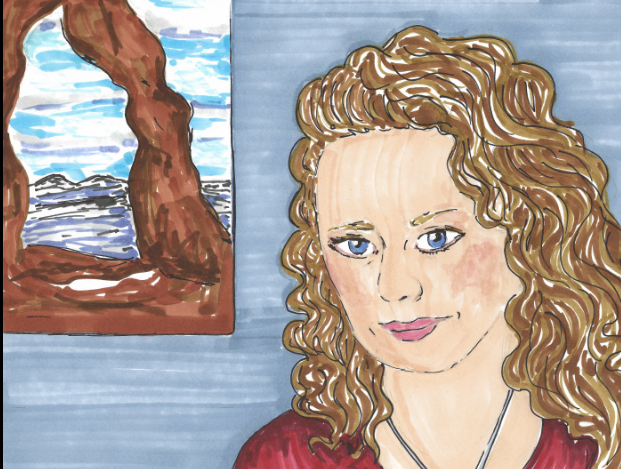Stephanie’s Biography
I am a Utah native and attended Elementary and Jr. High in Davis County then moved to the outskirts of Harrisonburg, Virginia, and finished my public schooling at Spotswood High School. Following High School, I first acquired an Associate's degree in business management from Blue Ridge Community College in Weyers Cave, VA. Then went on to earn a Bachelor's Degree in Fine Arts Education and Teacher's Certification from Arizona State University in Tempe, AZ. I worked full-time throughout my time in college and graduated Cum Laude from both institutions…
Stephanie’s Educational Philosophy
As a visual arts educator and artist, I aim to provide students with opportunities to express themselves effectively through various art media and to be thoughtful in art-making decisions through continual assessment and refinement of skills. My students are encouraged to constantly reflect on their art independently or by dialog with peers and from constructive teacher feedback. When craftsmanship, desired content, and successful application of the principles of art and design elements are thoughtfully combined, visual art becomes an effective means of expressing emotion, communicating ideas, and documenting the human experience.
As part of the artistic process, I encourage students to use all available physical and technology resources to solve problems, locate visual references, and self-educate. By facilitating the freedom to utilize available resources, I aim to allow students to generate what creatively speaks to them, meet their abilities, and develop life-long strategies to produce solutions independently. To encourage a thoughtful artistic process, I ask my students to create conceptual sketches, start with applying temporary mediums, and refine and complete works of art with more permanent mediums. The process I promote in my classroom stems from my approaches to creating my works of art as a landscape painter.
Structuring students’ freedom to use multiple resources is an evolving curriculum based on continual evaluation of instructional practices, prior student learning outcomes, and educational trends. Instructional content is delivered in-person and in a flipped classroom model, including Universal Design for learning strategies of image-rich content, translated documents, modeling, and student choice. The design of the art-making curriculum includes core content area learning to support retention and cultural responsiveness whenever possible to foster inclusivity. It builds on student access to prior knowledge to make learning more relevant and build scope and sequence. Exemplars, scaled, and ranked rubrics in both written and visual form provide a target for students to strive to meet.
I provide instructional setting stability through well-established, transparent, and communicated classroom management procedures and expectations through course disclosures, learning management systems, and consistent verbal dialog. During instruction, I monitor and adjust to meet my students' needs in both content and behaviorally. Anticipating common student errors, identifying weaknesses in the function of the art room, and developing quick solutions can mitigate further problems and bolster productivity. Success as an art teacher requires producing work as an independent artist, adapting to new changes, and continuing to learn professionally and personally to further intellectual and creative development. Engaging in these pursuits and functioning with a growth mindset fuels creativity that can translate into enthusiasm and energy in the classroom.


